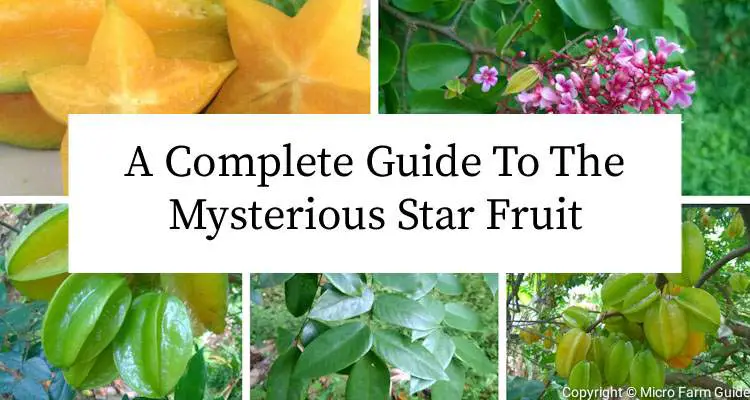Did you know Carambola is used in Ayurvedic and Traditional Chinese Medicine? Surprised?
Yes, It’s not just a tasty fruit but loaded with nutrients to keep you healthy and strong.
However, it isn’t for everyone, especially if you use certain medicines or suffer from specific medical conditions.
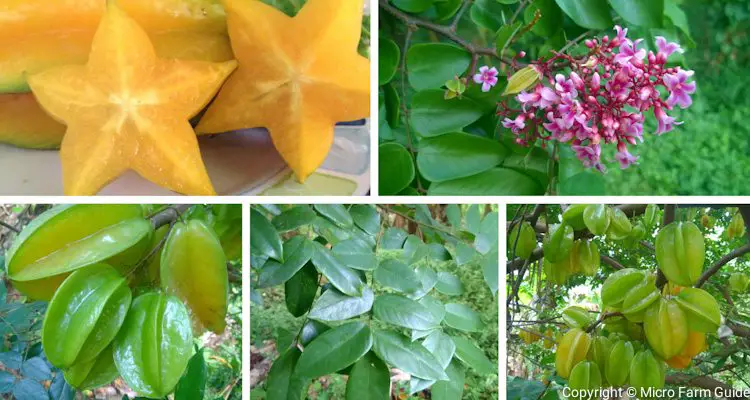
In this article, we’ll look closer at the mysterious star fruit Carambola, exploring its benefits and ways to use it.
But before we dive deeper into the world of Carambola, let’s find out what it really is.
What is Carambola?
Carambola or Averrhoa Carambola is a tropical fruit native to India, Indonesia, and Sri Lanka.
It is commonly known as “star fruit” due to its almost perfect star-shaped cross-section.
Carambola is considered an exotic gem and is loved for its sweet and tart varieties, which can be eaten raw or added to various dishes.
What Does Carambola Look Like?
As mentioned, Carambola stands out with its star-shaped appearance when cut across.
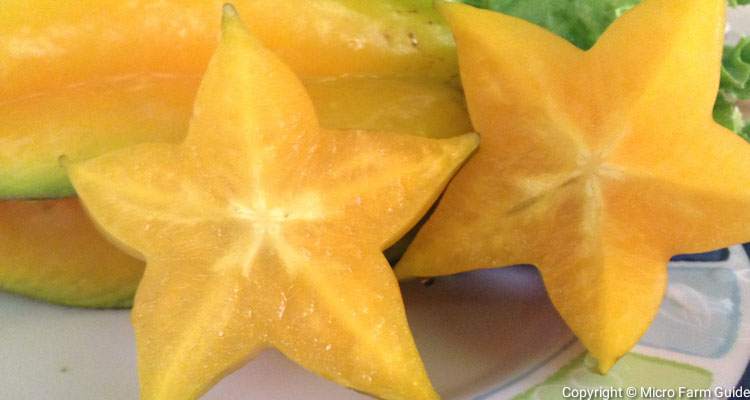
The tree can vary in height based on variety but generally can grow up to about 30 feet tall.
It is covered with shiny, green oval leaves, usually with tiny pink and white flower clusters.
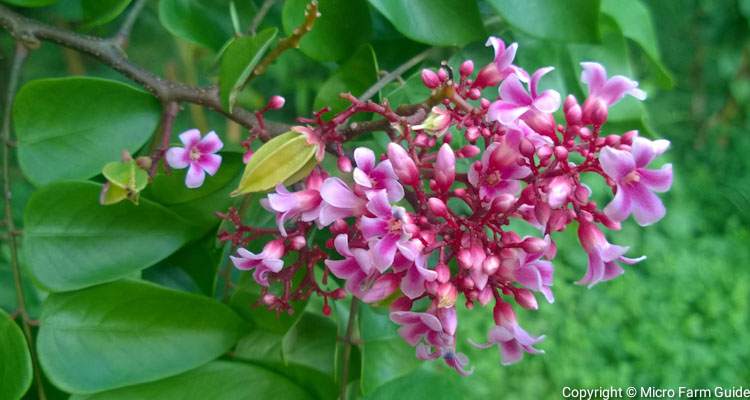
Once mature, the tree blooms and produces fruits year-round as long as the conditions are right.
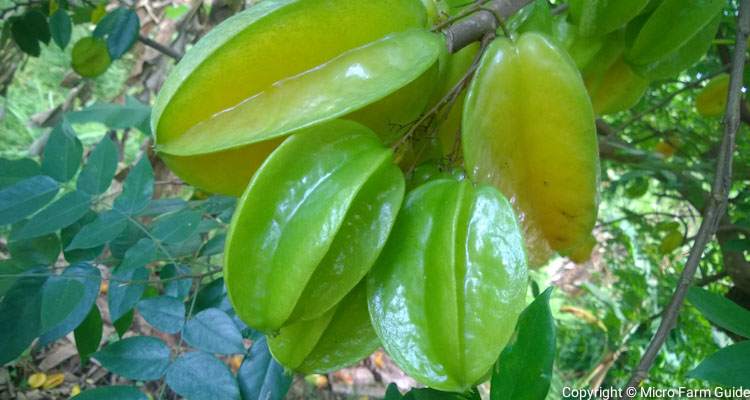
Carambola Varieties
There are several named varieties of Carambola, but I consider them sweet and sour or tart, as some will say.
Sweet varieties are perfect for snacking, while sour cultivars are great for cooking and beverages.
In fact, mixing the two creates a perfect sweet or tangy blend for juices, which is not only tasty but also good for you.
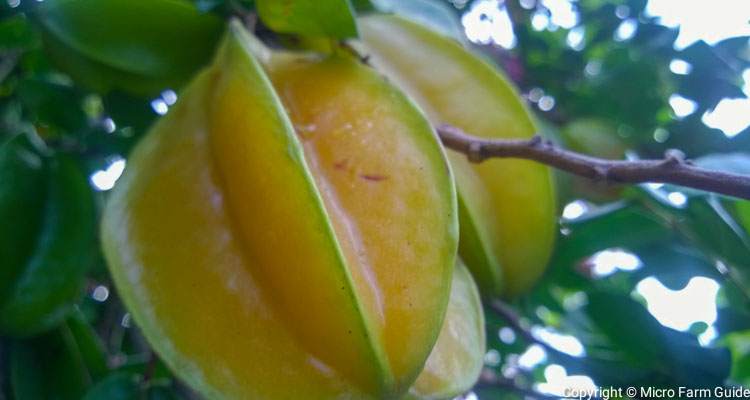
Nutritional Benefits of Carambola
Carambola is packed with nutrients such as Vitamin C, which helps keep the body healthy.
It also contains other essential nutrients, providing a burst of flavor with every bite.
For example, one medium, Carambola, has up to 10% dietary fiber, 3% Potassium, and 52% Vitamin C (based on a 2,000 calorie per day diet).
This nutrient content suggests that Carambola is effective in weight loss and preventing infections.
In fact, Star Fruit was traditionally used in Ayurvedic medicines to treat various ailments, such as ridding the body of excess water.
Culinary Uses of Carambola
This star fruit adds a magical touch to your recipes, from salads to desserts and beverages.
Sweet Star fruit is usually eaten raw and can be sliced into a star-shaped garnish.
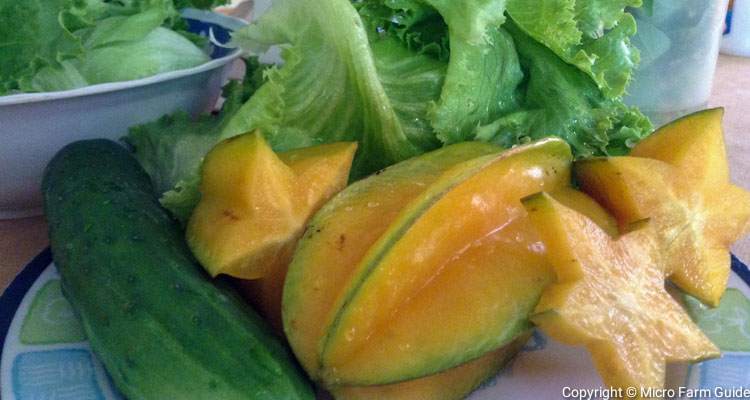
The tart varieties can be sauteed or stir-fried or used to make jams, sweet sauces, and sorbets.
I like to mix the sweet and sour fruits with some orange juice and lemon juice to make a tasty citrus punch that can be enjoyed chilled or frozen.
Selecting and Storing Carambola
Freshness and ripeness are the two most important things to consider when choosing carambolas.
And it doesn’t get any fresher than picking directly from the tree.
However, if that is not an option, you need to ensure you choose firm, yellow carambolas without signs of damage.
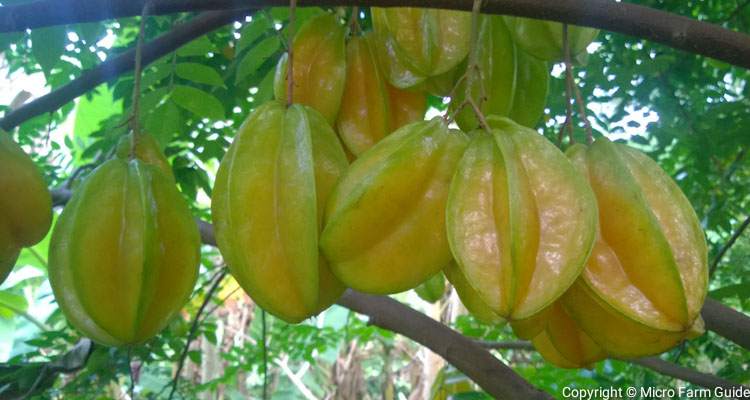
Handling Carambola is an art. Their ridges are easy to crush, so avoid packing them tightly.
Also, wash and store your carambolas in a cool place to help keep them fresh.
When using the fruit, avoid cutting the seed pouch in the middle. It sometimes contains a slimy liquid, which tastes a bit weird.
Concerns and Precautions
Before diving in and eating this delicious fruit, let’s address an important point.
Carambola has high levels of naturally occurring compounds called Oxalates, which are beneficial under normal circumstances.
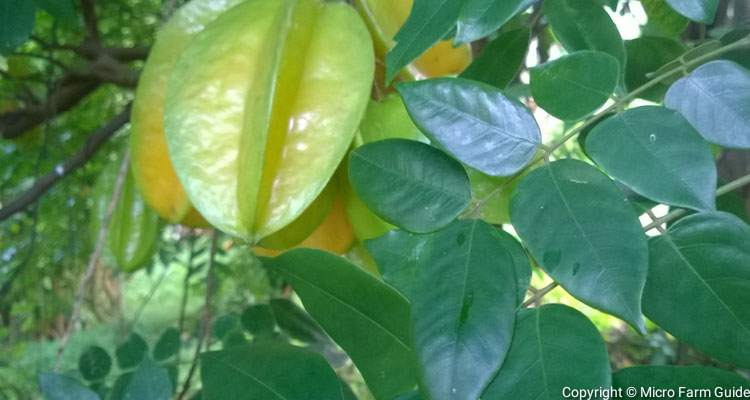
However, you must be cautious if you have existing kidney issues since these compounds can worsen them.
As a result, if you have health concerns, it would be wise to consult with a healthcare professional.
Your health is precious; seeking advice when trying something new is always a good idea.
A Brief Guide To Growing Carambola
If you live in a tropical region and have enough space, you can grow your own tree in your garden.
To do this, you must first choose a sunny spot where fertile soil drains quickly.
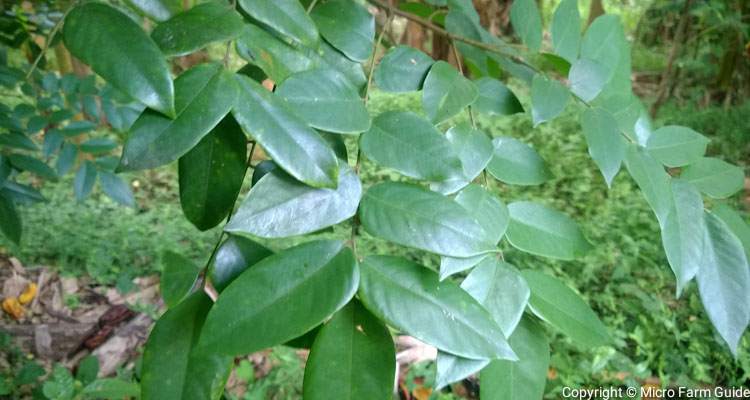
Next, plant either a seedling or a young tree, protecting it from strong winds and animals.
Then, water your carambola tree, occasionally providing a little slow-release natural fertilizer.
Carambola trees are relatively sturdy against winds. However, their fruits are tender and attract a host of pests.
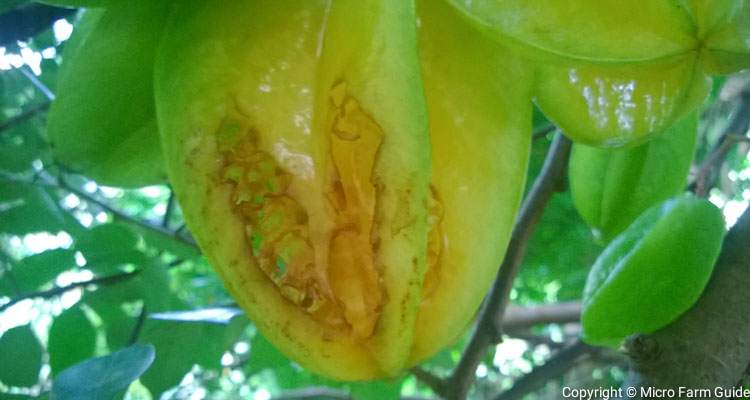
Some common pests include fruit flies, fruit-piercing moths, and wild parakeets.
As a result, you will have to take measures to protect your fruits, such as traps for the flies or pruning to keep the tree healthy.
Your first harvests will be exciting. Wait until the fruits are bright and yellow for the best taste.
Then, think about what you will do with hundreds of fruits to follow.
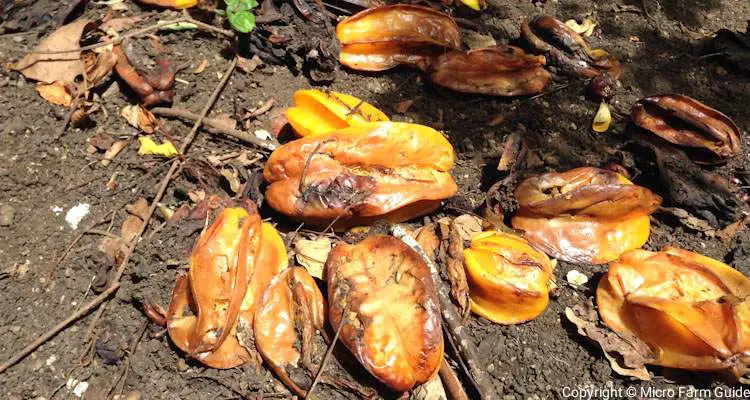
Final Thoughts
Thank you for exploring the mysteries and delights of this star fruit with us.
From its unique appearance and nutritional benefits to culinary wonders, Carambola is a tropical delight worth exploring.
We encourage you to incorporate Carambola into your meals and enjoy the unique flavors.
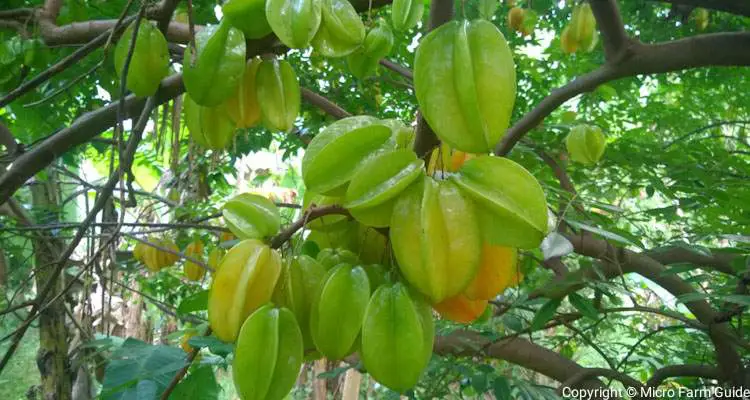
If you’ve discovered something fascinating and want to learn about other unique plants, check out our Plant Guide Page.
There’s a world of green wonders waiting for you. Happy exploring!
Related Questions
1. What is Carambola good for?
Carambola is excellent for adding a refreshing flavor to salads and drinks while providing essential vitamins and minerals, such as Vitamin C, which helps support immune health.
2. Can you eat Carambola raw?
Yes, you can eat Carambola raw, but ensure you choose a suitable variety since some can be pretty sour. Also, avoid cutting the seed sack in the middle, which can sometimes be filled with a weird tasting liquid.
3. What are the benefits of star fruits?
Carambola is rich in vitamin C, which helps to support a healthy immune system. Enjoying them can add a tasty boost to your overall well-being. For instance, adding Carambola to a salad is a refreshing way to benefit from its flavor and nutritional goodness.
4. What are the side effects of star fruit?
Star fruit has a high oxalate content, which may cause problems for people with kidney issues. As a result, you will need to consult a doctor for advice if you have existing kidney issues.
References
National Library Of Medicine. Nutritional And Medicinal Properties Of Star Fruit (Averrhoa Carambola). ncbi.nlm.nih.gov. Accessed November 2023
IFAS. Carambola Growing In The Florida Home Landscape. ifas.ufl.edu. Accessed November 2023
Nothern Territory Government. Carambola: Starfruit. nt.gov.au. Accessed November 2023

